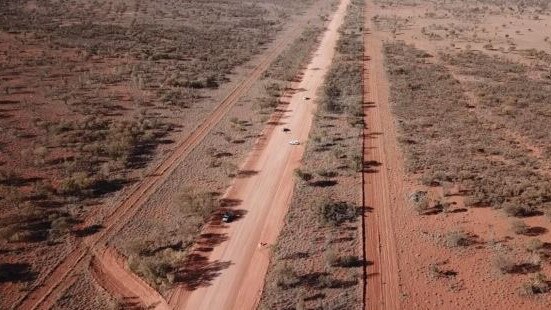NT coroner hands down findings in Kumanjayi Bloomfield death in custody investigation
The NT Coroner has found police need sufficient training to effectively communicate with Indigenous families during investigations after an inquest into the death of an NT station hand.
Centralian Advocate
Don't miss out on the headlines from Centralian Advocate. Followed categories will be added to My News.
THE NT Coroner Judge Greg Cavanagh has found police need sufficient training of cultural protocols to effectively communicate with Indigenous families during investigations after an inquest into the death of an NT station hand and father of five, who was poised to become a “future leader of his community”.
Kumanjayi Bloomfield, 42, died in a crash on the Plenty Highway near Harts Range after he tried to evade a roadside breath test (RBT) in July 2019.
The inquest heard police called off the pursuit a short time after but later found Mr Bloomfield’s body and the car wreckage.
MORE CENTRALIAN NEWS
COVID-19 vaccinations begin at Central Australian Aboriginal Congress
CHEAP FLIGHTS: Where you can fly from the Red Centre for half price
Rolfe trial likely to be narrowcast to Yuendumu
He had blood alcohol reading of 0.28 per cent when he died.
Mr Bloomfield’s death was considered a death in custody because it was deemed likely he was attempting to escape a police RBT when he died.
Mr Bloomfield’s family believed the investigation was corrupt after suspicions continued to grow when the family were not able to view the crash site, talk to the officers involved, see the deceased’s body and when the car was taken from the community under cover of darkness.
Mr Cavanagh said he found the police investigation “was comprehensive and of high quality”.
In his findings, Mr Cavanagh said evidence showed the Subaru “was being driven in an orderly manner and at an appropriate speed” before the officers ran and jumped into their vehicle.
He said police evidence showed at the time of ceasing the pursuit the Subaru was somewhere between 200 to 400 metres in front of them.

“It is unlikely that Kumanjayi heard the siren (from noise generated by travelling at speed on an unsealed road) but if he did he is unlikely to have heard it cease.
“In my view the police disengaged at an appropriate point in time.
“It should also be noted that after the police disengaged, Kumanjayi drove another five
kilometres and likely did not know the police had given up the chase. That was
primarily to do with the dust generated by his vehicle.”
Mr Cavanagh said “if the investigation had been completed in a timely fashion there would not have been over 18 months for the (families) suspicions to grow”.
HOT NEW DEAL: Read everything for 28 days for just $1
His recommendation included “that the Commissioner of Police provide sufficient training and
supervision to ensure that families are provided timely viewings and information so as
to enable them to make their own assessments of the circumstances and cause of death,
particularly when police are involved in those circumstances”.
“It should be possible to involve a nominated member or members of the family in viewing the body, the scene and in this case, the vehicles involved and providing an overview of what police are doing at the scene and in the community,” he said.


